-
 Bitcoin
Bitcoin $104,145.8347
0.40% -
 Ethereum
Ethereum $2,612.9097
3.22% -
 XRP
XRP $2.6129
2.73% -
 Tether USDt
Tether USDt $1.0000
-0.01% -
 Solana
Solana $180.9039
3.67% -
 BNB
BNB $656.0687
0.31% -
 USDC
USDC $0.9999
0.00% -
 Dogecoin
Dogecoin $0.2369
3.25% -
 Cardano
Cardano $0.8263
2.77% -
 TRON
TRON $0.2751
3.62% -
 Sui
Sui $3.9299
-1.46% -
 Chainlink
Chainlink $17.0313
1.74% -
 Avalanche
Avalanche $25.7440
4.30% -
 Stellar
Stellar $0.3122
0.74% -
 Shiba Inu
Shiba Inu $0.0...01599
1.77% -
 Hedera
Hedera $0.2097
-0.48% -
 Pi
Pi $1.2079
9.41% -
 Hyperliquid
Hyperliquid $25.5683
1.36% -
 Toncoin
Toncoin $3.3350
1.41% -
 UNUS SED LEO
UNUS SED LEO $8.7952
2.34% -
 Bitcoin Cash
Bitcoin Cash $407.8157
1.16% -
 Polkadot
Polkadot $5.0891
1.29% -
 Litecoin
Litecoin $102.5852
-0.11% -
 Monero
Monero $341.2312
0.11% -
 Pepe
Pepe $0.0...01408
0.58% -
 Bitget Token
Bitget Token $4.7903
0.46% -
 Dai
Dai $1.0000
0.00% -
 Ethena USDe
Ethena USDe $1.0005
0.01% -
 Uniswap
Uniswap $6.7279
-1.54% -
 Bittensor
Bittensor $456.9229
-0.23%
How to prevent Bitcoin wallets from being hacked?
Safeguarding your Bitcoin requires strong passwords, 2FA, avoiding phishing & malware, using reputable platforms, securing your seed phrase, and staying informed on security best practices.
Mar 15, 2025 at 11:36 am
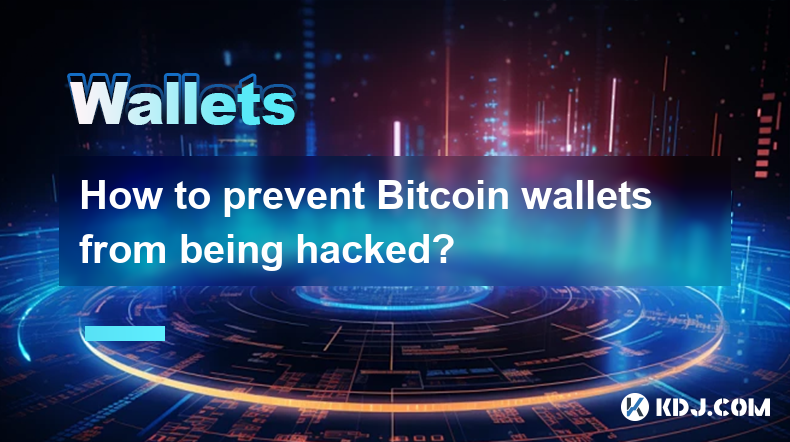
Key Points:
- Understanding the vulnerabilities of different Bitcoin wallet types.
- Implementing strong password practices and two-factor authentication (2FA).
- Recognizing and avoiding phishing scams and malware.
- Utilizing reputable exchanges and wallet providers.
- Regularly backing up and securing your wallet's seed phrase.
- Staying informed about security best practices and updates.
How to Prevent Bitcoin Wallets from Being Hacked
Bitcoin wallets, while offering a revolutionary way to manage cryptocurrency, are unfortunately vulnerable to hacking attempts. Protecting your Bitcoin requires a multi-layered approach encompassing strong security practices and awareness of common threats. This article delves into effective strategies to safeguard your digital assets.
Choosing the Right Wallet:
The first step in preventing hacking is selecting a secure wallet type. Hardware wallets, like Ledger and Trezor, offer the highest level of security by storing your private keys offline. Software wallets, while convenient, require extra caution. Desktop wallets offer more control but are susceptible to malware. Mobile wallets are portable but can be vulnerable to phone compromises. Web wallets, while accessible, often have security risks associated with the platform itself. Choose the wallet that best suits your needs and risk tolerance.
Password Security:
Employing strong passwords is paramount. Avoid easily guessable passwords and use a unique, complex password for each wallet. Consider using a password manager to generate and securely store these passwords. Remember, a compromised password is the easiest entry point for hackers.
Two-Factor Authentication (2FA):
2FA adds an extra layer of security. This usually involves receiving a code via email, SMS, or an authenticator app after entering your password. Enabling 2FA makes it significantly harder for hackers to access your wallet even if they obtain your password. Always enable this feature whenever possible.
Recognizing and Avoiding Phishing Scams:
Phishing attempts are prevalent in the cryptocurrency world. Hackers often impersonate legitimate companies or individuals to trick you into revealing your private keys or seed phrase. Never click on suspicious links or provide your sensitive information unless you're absolutely certain of the source's legitimacy. Verify the website's authenticity and look for secure connections (HTTPS).
Malware Protection:
Malware can infect your computer and steal your private keys. Install and maintain reputable antivirus and anti-malware software. Regularly update your software and operating system to patch security vulnerabilities. Be cautious about downloading files from untrusted sources.
Reputable Exchanges and Wallet Providers:
Use only well-established and reputable exchanges and wallet providers. Research their security practices and read user reviews before entrusting them with your Bitcoin. Avoid lesser-known platforms or those with a history of security breaches.
Seed Phrase Security:
Your seed phrase is the key to accessing your Bitcoin. Treat it like the combination to a vault. Never share it with anyone, and never write it down in an easily accessible location. Consider using a physical, tamper-evident device to store it securely, away from potential threats. Memorizing it is another option, but it requires exceptional memory and caution.
Regular Backups:
Regularly back up your wallet data, but ensure your backup is stored securely and separately from your primary wallet. Cloud storage, while convenient, can be vulnerable to hacking. Consider using offline backups, such as physical storage devices or writing it down on paper.
Staying Informed:
The cryptocurrency landscape is constantly evolving, with new security threats emerging regularly. Stay updated on the latest security best practices and advisories. Follow reputable news sources and security experts in the cryptocurrency community. Be aware of emerging scams and vulnerabilities.
Software Updates:
Keep your wallet software updated. Developers regularly release updates that patch security vulnerabilities. Outdated software increases your risk of being hacked.
Hardware Wallet Security:
If using a hardware wallet, protect the device itself from physical theft or damage. Store it in a safe place and never reveal your PIN.
Network Security:
Ensure your internet connection is secure and protected by a firewall. Using a VPN can add an extra layer of security, especially when using public Wi-Fi.
Common Questions:
Q: What is a seed phrase, and why is it so important?
A: A seed phrase is a list of words that acts as a master key to your Bitcoin wallet. It allows you to recover your funds if your wallet is lost or damaged. It is crucial to protect it as a compromised seed phrase grants complete access to your Bitcoin.
Q: What are the risks of using a web wallet?
A: Web wallets are convenient but often store your private keys on the provider's servers, increasing the risk of hacking or theft if the provider's security is compromised.
Q: How often should I back up my wallet?
A: Back up your wallet regularly, at least every few months. The frequency depends on how often you use your wallet and the amount of Bitcoin you hold.
Q: What should I do if I suspect my wallet has been hacked?
A: Immediately change your passwords, contact your wallet provider, and monitor your account for any unauthorized activity. Report the incident to the relevant authorities if necessary.
Q: Are there any specific scams I should watch out for?
A: Be wary of unsolicited emails, messages, or phone calls requesting your private keys or seed phrase. Never share this information. Watch out for fake websites mimicking legitimate exchanges or wallet providers. Look for secure connections (HTTPS) before entering any sensitive information.
Disclaimer:info@kdj.com
The information provided is not trading advice. kdj.com does not assume any responsibility for any investments made based on the information provided in this article. Cryptocurrencies are highly volatile and it is highly recommended that you invest with caution after thorough research!
If you believe that the content used on this website infringes your copyright, please contact us immediately (info@kdj.com) and we will delete it promptly.
- As Bitcoin Rises, These 5 Altcoins Are Gearing Up to Secure Their Respective Resistances
- 2025-05-14 20:25:12
- Super Micro Computer (SMCI) Shares Soar 16% on Raymond James Initiation with a Buy Rating and $41 Price Target
- 2025-05-14 20:25:12
- Solana Reclaims the $180 Mark for the First Time Since Mid-February
- 2025-05-14 20:20:12
- Supermicro (SMCI) Stock Moves Like an Exciting Altcoin
- 2025-05-14 20:20:12
- Bitcoin Dominance Drops to 62% as Altcoins Start to Fight Back
- 2025-05-14 20:15:12
- The pseudonymous marketing lead of the SHIB team, Lucie, has sent a harsh critique at those token makers who burn coins just for the sake of promoting their own products.
- 2025-05-14 20:15:12
Related knowledge
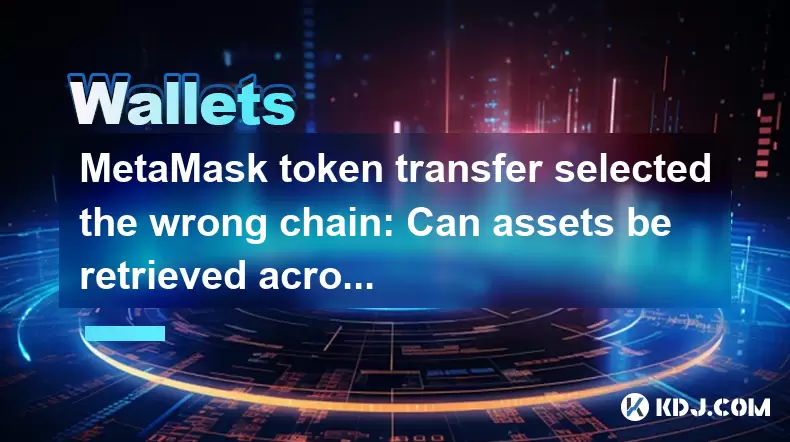
MetaMask token transfer selected the wrong chain: Can assets be retrieved across chains?
May 14,2025 at 08:42pm
When using MetaMask to transfer tokens, selecting the wrong chain can be a stressful mistake. Many users wonder if their assets can be retrieved across chains after such an error. In this article, we will delve into the intricacies of cross-chain asset retrieval, the steps you can take if you find yourself in this situation, and the potential outcomes. ...
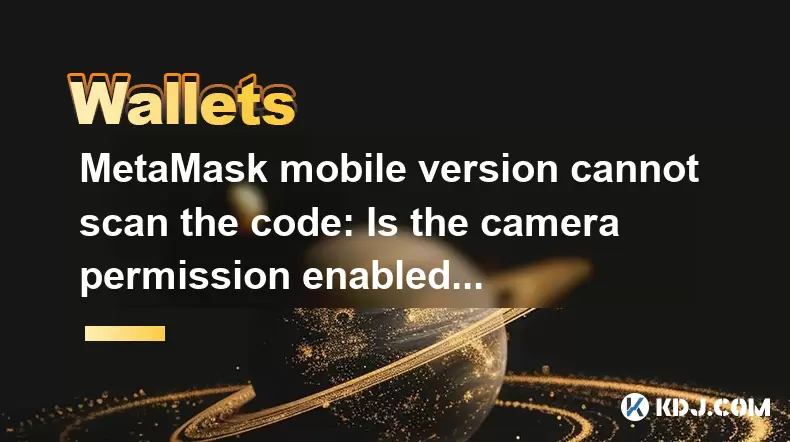
MetaMask mobile version cannot scan the code: Is the camera permission enabled?
May 14,2025 at 07:00pm
Title: MetaMask Mobile Version Cannot Scan the Code: Is the Camera Permission Enabled? When using the MetaMask mobile application, one of the common issues users encounter is the inability to scan QR codes. This problem often stems from camera permission issues on the mobile device. This article delves into the reasons behind this issue, how to check if...
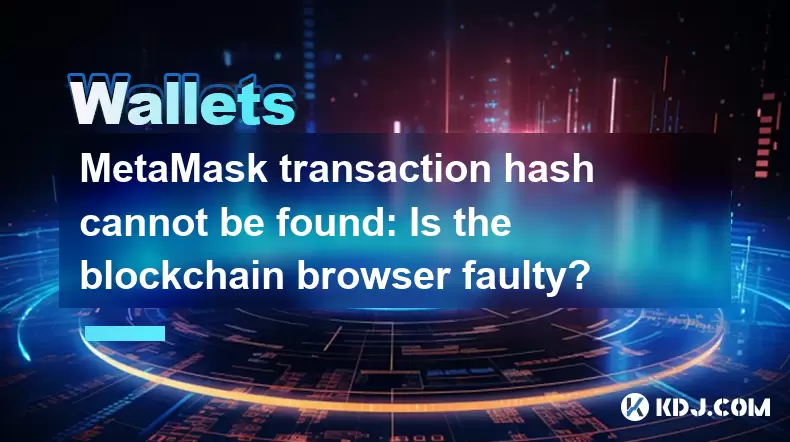
MetaMask transaction hash cannot be found: Is the blockchain browser faulty?
May 14,2025 at 07:42pm
When users encounter the issue where a MetaMask transaction hash cannot be found, it often leads to confusion and frustration. This problem can arise due to various reasons, and it's essential to understand that it's not always a fault of the blockchain browser. In this article, we will delve into the possible reasons behind this issue, how to troublesh...
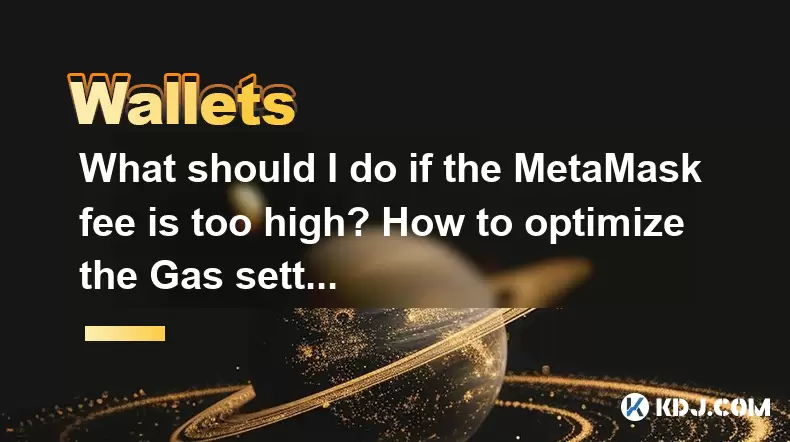
What should I do if the MetaMask fee is too high? How to optimize the Gas settings?
May 14,2025 at 07:21pm
If you find that the MetaMask fee is too high, there are several strategies you can use to optimize your Gas settings and reduce costs. Understanding how Gas works and how to adjust your settings can help you save money on transaction fees. Let's dive into the details of how you can manage and optimize your Gas settings effectively. Understanding Gas an...
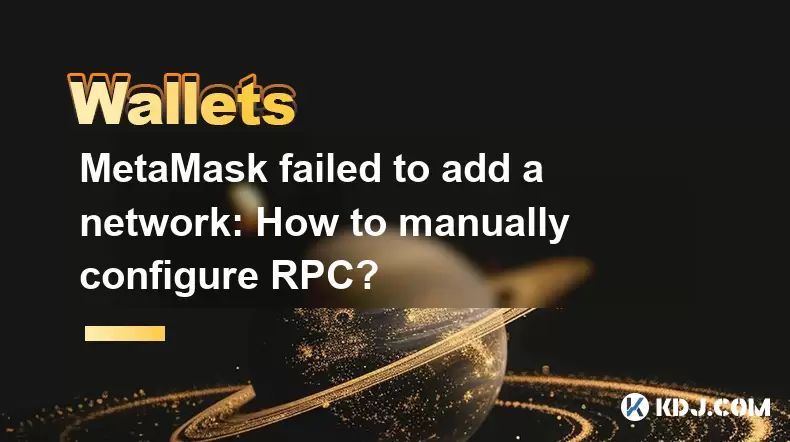
MetaMask failed to add a network: How to manually configure RPC?
May 14,2025 at 06:43pm
Introduction to MetaMask and RPC ConfigurationMetaMask is a popular cryptocurrency wallet that allows users to interact with the Ethereum blockchain and other compatible networks. One of the essential features of MetaMask is the ability to add custom networks, which can be done through the use of Remote Procedure Call (RPC). However, users sometimes enc...
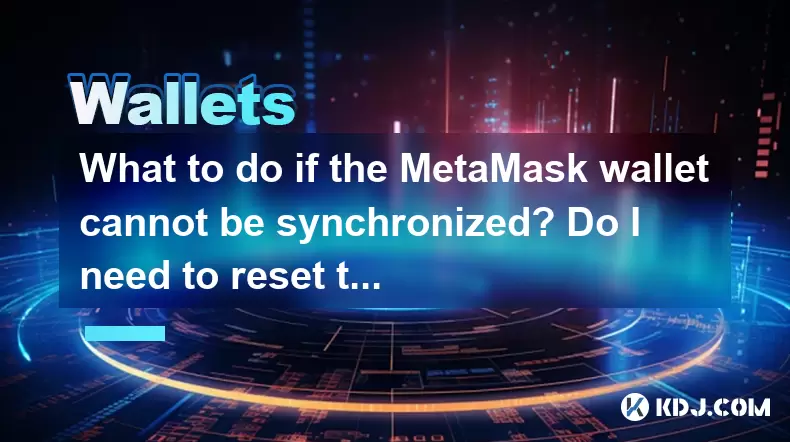
What to do if the MetaMask wallet cannot be synchronized? Do I need to reset the account?
May 14,2025 at 08:28pm
If you're experiencing issues with your MetaMask wallet not synchronizing, it can be frustrating and concerning. However, before considering drastic measures like resetting your account, there are several troubleshooting steps you can take to resolve the issue. This article will guide you through the process of diagnosing and fixing synchronization prob...

MetaMask token transfer selected the wrong chain: Can assets be retrieved across chains?
May 14,2025 at 08:42pm
When using MetaMask to transfer tokens, selecting the wrong chain can be a stressful mistake. Many users wonder if their assets can be retrieved across chains after such an error. In this article, we will delve into the intricacies of cross-chain asset retrieval, the steps you can take if you find yourself in this situation, and the potential outcomes. ...

MetaMask mobile version cannot scan the code: Is the camera permission enabled?
May 14,2025 at 07:00pm
Title: MetaMask Mobile Version Cannot Scan the Code: Is the Camera Permission Enabled? When using the MetaMask mobile application, one of the common issues users encounter is the inability to scan QR codes. This problem often stems from camera permission issues on the mobile device. This article delves into the reasons behind this issue, how to check if...

MetaMask transaction hash cannot be found: Is the blockchain browser faulty?
May 14,2025 at 07:42pm
When users encounter the issue where a MetaMask transaction hash cannot be found, it often leads to confusion and frustration. This problem can arise due to various reasons, and it's essential to understand that it's not always a fault of the blockchain browser. In this article, we will delve into the possible reasons behind this issue, how to troublesh...

What should I do if the MetaMask fee is too high? How to optimize the Gas settings?
May 14,2025 at 07:21pm
If you find that the MetaMask fee is too high, there are several strategies you can use to optimize your Gas settings and reduce costs. Understanding how Gas works and how to adjust your settings can help you save money on transaction fees. Let's dive into the details of how you can manage and optimize your Gas settings effectively. Understanding Gas an...

MetaMask failed to add a network: How to manually configure RPC?
May 14,2025 at 06:43pm
Introduction to MetaMask and RPC ConfigurationMetaMask is a popular cryptocurrency wallet that allows users to interact with the Ethereum blockchain and other compatible networks. One of the essential features of MetaMask is the ability to add custom networks, which can be done through the use of Remote Procedure Call (RPC). However, users sometimes enc...

What to do if the MetaMask wallet cannot be synchronized? Do I need to reset the account?
May 14,2025 at 08:28pm
If you're experiencing issues with your MetaMask wallet not synchronizing, it can be frustrating and concerning. However, before considering drastic measures like resetting your account, there are several troubleshooting steps you can take to resolve the issue. This article will guide you through the process of diagnosing and fixing synchronization prob...
See all articles





















![[Market 5.13] BTC continues to play music and dance? #btc #ETH #sol #doge [Market 5.13] BTC continues to play music and dance? #btc #ETH #sol #doge](/uploads/2025/05/14/cryptocurrencies-news/videos/market-btc-continues-play-music-dance-btc-eth-sol-doge/image_500_375.webp)




![[Ronnie Trading Guide]-2025.5.14-Notice: Bitcoin will test the previous high soon~ wait and see~ [Ronnie Trading Guide]-2025.5.14-Notice: Bitcoin will test the previous high soon~ wait and see~](/uploads/2025/05/14/cryptocurrencies-news/videos/ronnie-trading-guidenotice-bitcoin-test-previous-wait/image_500_375.webp)





























































